13 Signs on Your Face that May Indicate a Health Issue
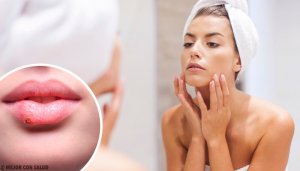

Reviewed and approved by the doctor Maricela Jiménez López
Sometimes, all it takes is a look in the mirror and paying attention to some details in your face to detect any disease you may be suffering from.
Just look in the mirror and watch out for the details that we’ll go over below. As they say, “The face is the reflection of the soul”. Maybe that is why it’s also the reflection of our health. Your face is one of the best indicators of your health.
13 signs on your face that may indicate diseases
Remember that these signs don’t always reflect diseases but can actually be an effect of hormonal changes or lack of sleep, among other causes. Therefore, if you suspect that you’re suffering from a serious disease, it’s best to see a doctor to get diagnosed and the right treatment.
1. Dark bags and circles under the eyes
In general, under-eye bags are genetic. However, if they appear overnight, making you look tired or sick, then it might be something else.
Some of the possible causes are:
- Lack of sleep.
- Alcohol abuse.
- Smoking.
- A hormone imbalance.
- Poor nutrition.
2. Spots or acne on the forehead
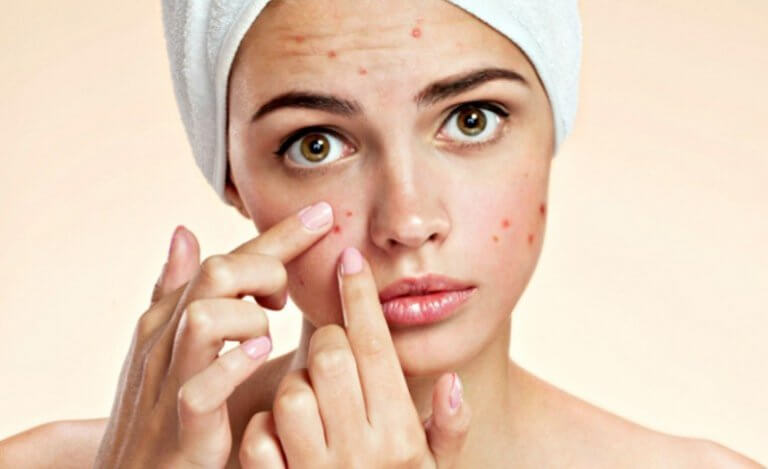
Did you suddely get mild acne? This can be due to certain digestive problems or the consumption of fatty foods. Some evidence seems to suggest that the gastrointestinal tract is related to the appearance of acne.
If this is the case, it’s best to make small eating habit changes. Don’t hesitate to go see a nutritionist for expert advice.
We recommend you read: 5 Natural Treatments for Facial Acne
3. Red nose
If you notice that your nose is redder than usual, remember that it connects to various blood vessels. If some aren’t working well, the color could automatically change.
Go to the doctor as soon as possible to get it checked out. It could be a health issue that requires significant medical attention, such as rhinophyma, or just allergies or a simple cold.
4. Yellow skin and eyes
This could mean that your liver isn’t working properly. Jaundice is the yellowing of the skin or eyes due to bilirubin and can be a sign of various health problems.
Go to the doctor as soon as possible for a check-up on your pancreas, liver, or gallbladder and to rule out issues such as hepatitis, mononucleosis, etc.
5. New moles and birthmarks
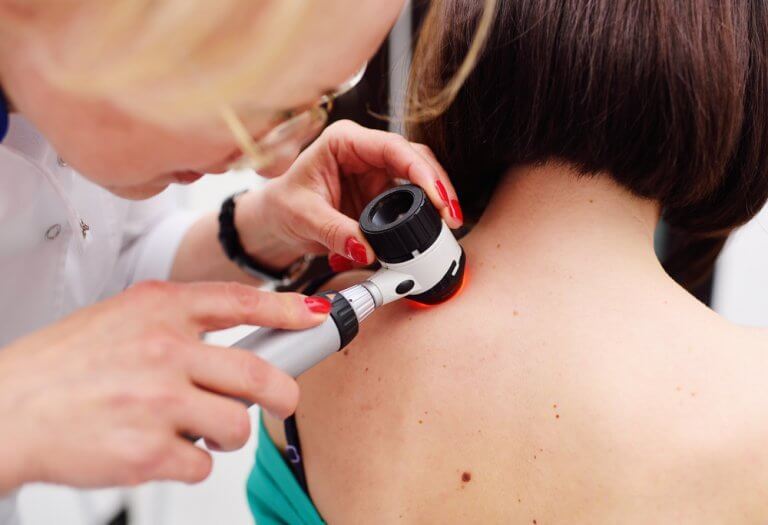
After spending hours in the sun, spots may appear on your skin. If this happens to you, you should restrict your sun exposure and use sunscreen regularly.
If you notice irregular changes in your moles or birthmarks after sun exposure, it’d be best to see a doctor.
6. Butterfly-shaped facial rash
It tends to appear as a more extensive red spot on the face and may be due to a disease known as systemic lupus erythematosus.
It’s important to go see your doctor to get tested and the proper treatment, depending on your case.
7. Flaky skin around the mouth and nose
These signs warn of a lack of vitamins like A, B, C, or E. You may also notice considerable hair loss, fragile nails, and generalized weakness in the rest of your body.
See a nutritionist and start readjusting your diet by adding foods rich in the vitamins you lack. In the long term, these deficits can be very harmful to health.
8. Rash in the nasolabial area
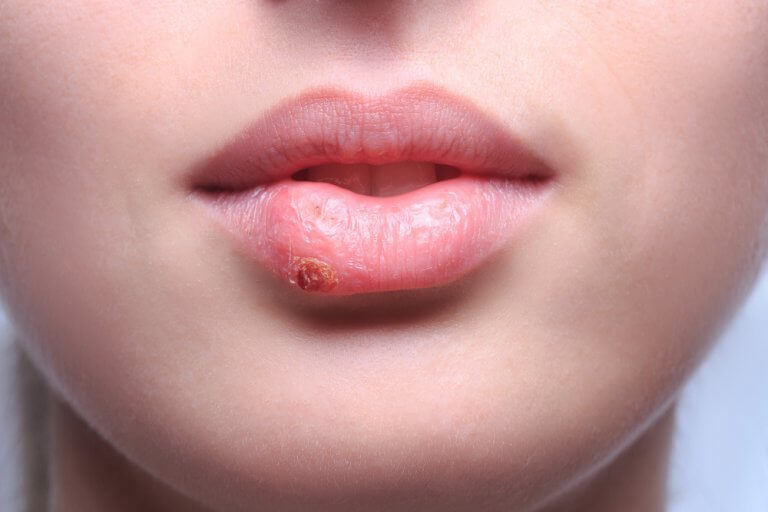
If you see a rash in specific places on your lips or nose, this indicates that you probably have some kind of herpes.
There’s nothing to worry about, as it usually heals itself. However, applying medicinal ointment isn’t a bad idea.
9. Cracked lips
If you have cracking, excessively dry lips, it’s very important to drink plenty of water. Additionally, lip balms can also be a good solution.
In general, it may be due to dehydration, sun exposure, or an allergy.
10. Excessive facial hair
This is another trait that’s usually genetic. However, this doesn’t rule out the possibility of a hormonal change caused by polycystic ovarian syndrome (PCOS).
If that’s the case, see your gynecologist to get treated. They’ll determine the cause of the problem.
11. Hyperpigmentation in the face
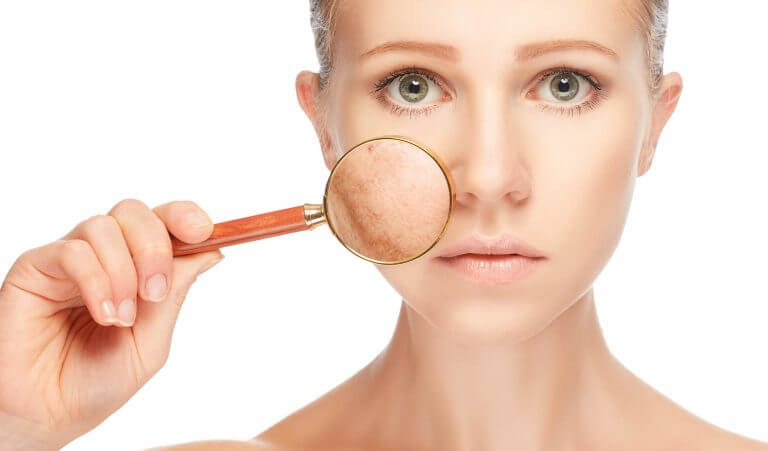
This sign tends to manifest during pregnancy in many women. It looks like a spot on your cheeks or septum.
It’s considered a type of hyperpigmentation called dark spots or melasma. You should go see your doctor if you have one, especially if it’s unrelated to pregnancy.
12. Thin eyebrows and eyelashes
For no apparent surgery or treatment, you suddenly notice that your eyebrows or eyelashes have thinned out or that you’ve lost eyelashes.
Don’t ignore it, because you may have a problem in your thyroid gland. We suggest getting blood tests and seeing a doctor.
13. Acne and rash or discoloration on the chin
Your chin is directly associated with hormone levels. Thus, the factors that cause acne or a rash in this area may include:
- A hormone imbalance.
- Lack of sleep.
- Stress.
What to do if any of these signs appear on your face?
In most cases, they aren’t indicate of disease. However, it’s important to see a doctor and get regular check-ups to rule out more serious problems.
Sometimes, they can be due to stress, hormonal imbalances, or even lack of sleep. Try to eat healthier. Add vegetables to your daily meals and check your habits. You’ll see the difference!
All cited sources were thoroughly reviewed by our team to ensure their quality, reliability, currency, and validity. The bibliography of this article was considered reliable and of academic or scientific accuracy.
- Tan, J. K. L., & Bhate, K. (2015). A global perspective on the epidemiology of acne. British Journal of Dermatology. https://doi.org/10.1111/bjd.13462
- Arduino, P. G., & Porter, S. R. (2008). Herpes Simplex Virus Type 1 infection: Overview on relevant clinico-pathological features. Journal of Oral Pathology and Medicine. https://doi.org/10.1111/j.1600-0714.2007.00586.x
- Nygaard, B. (2015). Primary hypothyroidism. American Family Physician. https://doi.org/10.1016/S0015-1882(09)70095-3
- Liu, A., Al-Lami, A., & Kapoor, K. (2019). Rhinophyma: when Red Nose Day is no laughing matter. The British journal of general practice : the journal of the Royal College of General Practitioners, 69(680), 137. https://doi.org/10.3399/bjgp19X701585
- Sarkar, R., Ranjan, R., Garg, S., Garg, V. K., Sonthalia, S., & Bansal, S. (2016). Periorbital Hyperpigmentation: A Comprehensive Review. The Journal of clinical and aesthetic dermatology, 9(1), 49–55
- Bowe, W. P., & Logan, A. C. (2011). Acne vulgaris, probiotics and the gut-brain-skin axis – back to the future?. Gut pathogens, 3(1), 1. https://doi.org/10.1186/1757-4749-3-1
-
Gondal B, Aronsohn A. A Systematic Approach to Patients with Jaundice. Semin Intervent Radiol. 2016;33(4):253-258. doi:10.1055/s-0036-1592331
- Basit H, Godse KV, Al Aboud AM. Melasma. [Updated 2020 Jan 15]. In: StatPearls [Internet]. Treasure Island (FL): StatPearls Publishing; 2020 Jan-. Available from: https://www.ncbi.nlm.nih.gov/books/NBK459271/
- Jović A, Marinović B, Kostović K, Čeović R, Basta-Juzbašić A, Bukvić Mokos Z. The Impact of Pyschological Stress on Acne. Acta Dermatovenerol Croat. 2017;25(2):1133-1141.
This text is provided for informational purposes only and does not replace consultation with a professional. If in doubt, consult your specialist.








